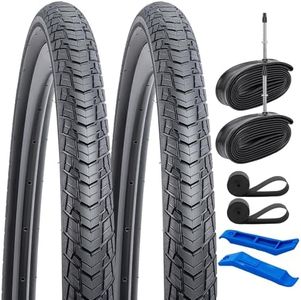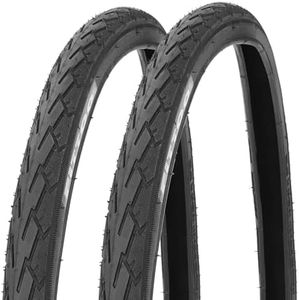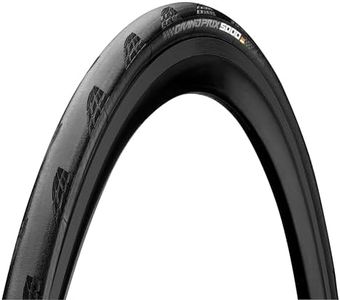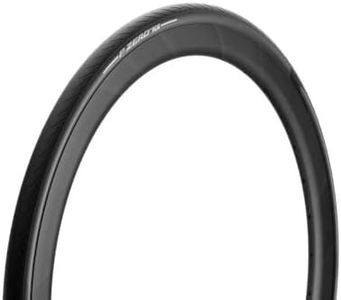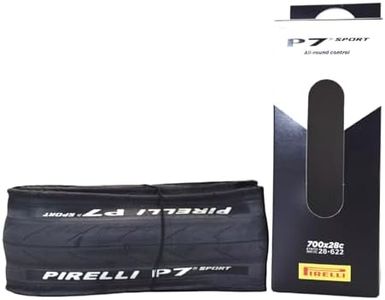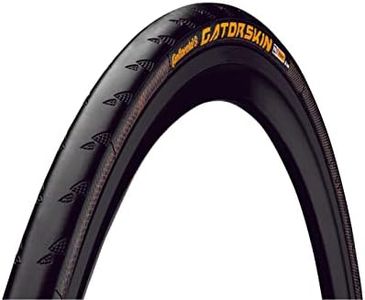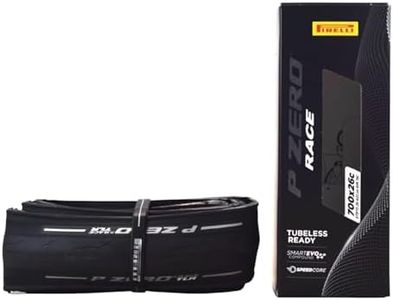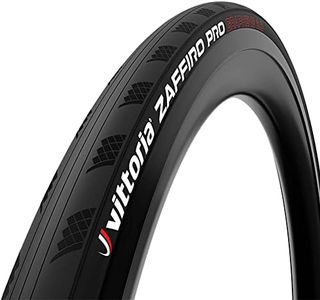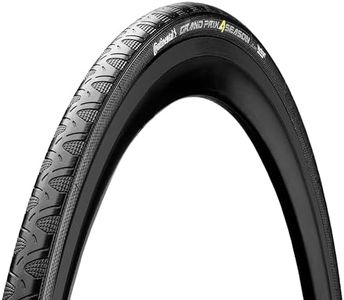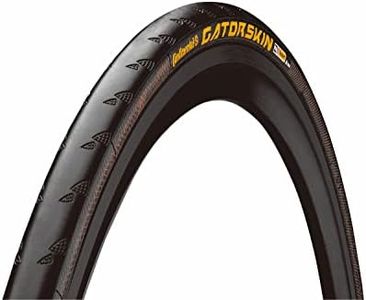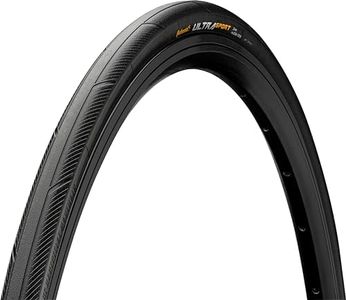We Use CookiesWe use cookies to enhance the security, performance,
functionality and for analytical and promotional activities. By continuing to browse this site you
are agreeing to our privacy policy
10 Best Road Bike Tires
From leading brands and best sellers available on the web.Buying Guide for the Best Road Bike Tires
Choosing the right road bike tires is essential for a comfortable, efficient, and safe ride. Tires are the only point of contact your bike has with the road, and the type you choose can hugely affect speed, handling, puncture resistance, and your overall riding experience. Whether you're a commuter, recreational rider, or aspiring racer, understanding the key features of road bike tires will help you make the best choice for your cycling needs.Tire WidthTire width refers to how wide the tire is across its tread when fully inflated. Wider tires (28mm-32mm or more) offer greater comfort and stability as they can run at lower pressures and absorb shocks from rough roads. Narrower tires (23mm-25mm) are traditional for racing and are often lighter with less rolling resistance, making them faster on smooth surfaces. To pick the right width, consider the roads you ride on, your comfort preference, and your bike's frame clearance. For rough roads and long rides, go wider; for speed on smooth roads, narrow is often better.
Tread PatternThe tread pattern is the design on the tire's surface that touches the road. Most road bike tires have a smooth or minimal tread since smooth surfaces need less grip. Slick tires are best for dry conditions and racing, allowing for minimal rolling resistance and maximum speed. Tires with a slight tread may offer better grip in wet conditions. Think about the typical weather and terrain you'll ride in—if you face a lot of water or varied surfaces, a little tread might help, but on dry, clean roads, slick is usually ideal.
Puncture ProtectionPuncture protection refers to layers of extra material inside the tire meant to prevent sharp objects from causing flats. More puncture protection usually means a slightly heavier tire, but it's a great choice if you ride in areas with lots of debris or if you want reliability for commuting. If every second counts and your routes are clean, you can opt for lighter tires with less protection. For peace of mind on everyday rides, especially in urban settings, more puncture protection is a sensible pick.
Tire CompoundThe tire compound indicates the type of rubber used for the tire. Softer compounds offer better grip, which is great for cornering and wet roads, but they may wear out faster. Harder compounds last longer and roll more easily, which is good for dry, straight-line riding. Think about what you value more—grip and handling or long-lasting durability—to choose the compound that suits your riding style.
Tubeless vs. TubedTubeless tires can run without an inner tube, sealing directly to the rim, while traditional tubed tires use an inner tube to hold air. Tubeless tires can be run at lower pressures, reducing flats from pinching and improving comfort, but they require rims that are compatible and more careful setup. Tubed tires are easy to maintain and repair. If you prefer lower maintenance and familiar repairs, tubed is simple; for better puncture resistance and performance, tubeless is an exciting option if your equipment allows.
TPI (Threads Per Inch)TPI measures how many threads are woven into one inch of the tire casing. Higher TPI tires are generally lighter, more supple, and offer a smoother ride, but they can be less resistant to punctures. Lower TPI tires are tougher and usually provide more protection at the expense of some comfort and weight. If you want a plush, fast-feeling tire for racing or long rides, go for higher TPI. If you're more concerned about durability and rough surfaces, lower TPI might be better.
Mounting (Clincher, Tubular, Tubeless-ready)This spec refers to how the tire attaches to the rim. Clincher tires are the most common and use a bead to hook onto the rim with a separate innertube. Tubular tires are glued to special rims and are mainly used by racers for their lightness and ride quality. Tubeless-ready can work without a tube on compatible rims. Your bike's rims will affect your options—clincher is standard and easiest, tubeless-ready for better puncture resistance, and tubular mainly for competition.
